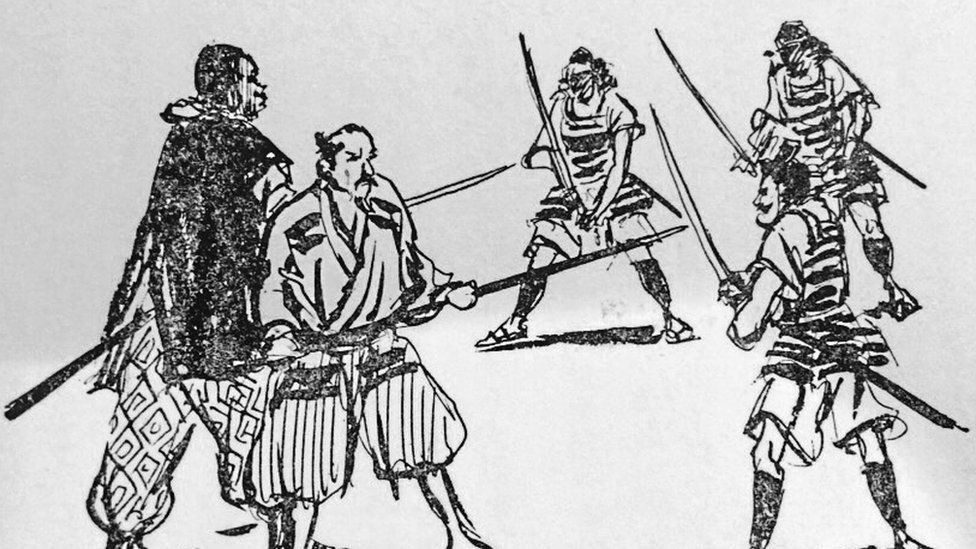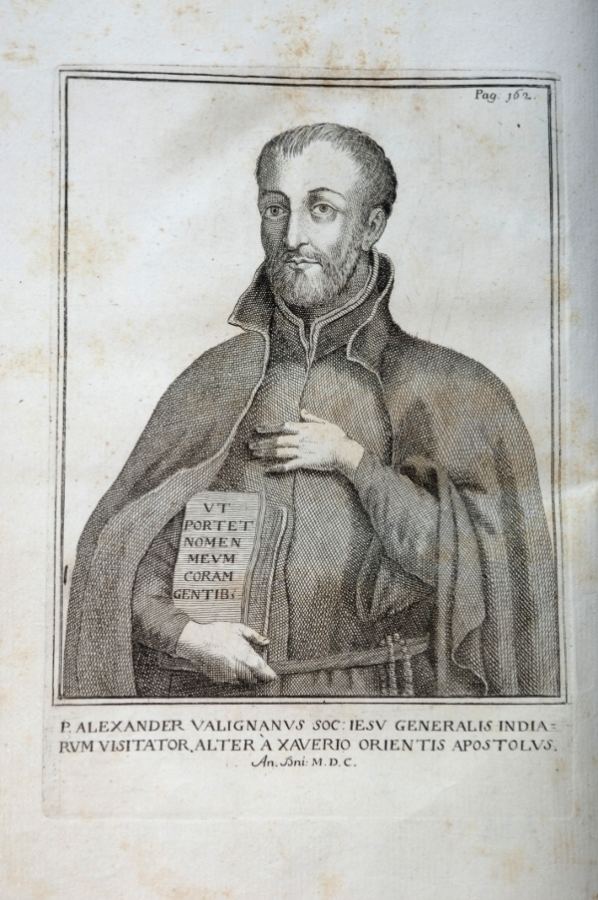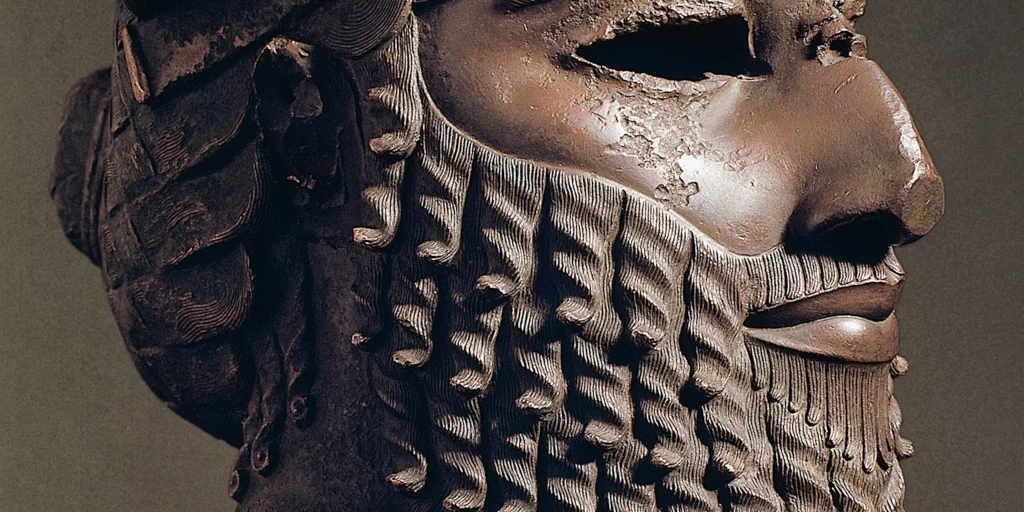Japan’s Sengoku period between 1467 and 1615 was a time of political intrigue, war, and change on a massive scale. The enormous demand for samurai marked a cultural shift that forever altered Japanese history.
One of the fascinating tales from this period is the story of Yasuke, the black samurai. He was an outsider who befriended Oda Nobunaga and took part in some of the most iconic events of the period.

Yasuke’s Early Life
Before he became Japan’s first black samurai, accounts are uncertain of Yasuke’s origins. There’s no written history of his life before he arrived in Japan.
Nobody knows how he came into Alessandro Vaglignano’s service or where he was before that, but there’s a lot of speculation.
Some sources suggest he was a European or Arab slave trade victim.
They believe he came from Congo, Angola, or Ethiopia. Some accounts think he was a member of the Dinka in South Sudan, some of the tallest men in Africa.
One of the most compelling is a 1672 account from Jesuit Pere Francois Solier, who believes he came from Mozambique, though he never does say where he got that information.
It’s not just where he was born that’s a mystery. His age ranges from 16 and 28, with most primary sources contradicting each other. Even his name is uncertain, as Yasuke may be a phonetic translation, or Japanaization, of his birth name.
There are some things we know for sure. Yasuke was a magnificent warrior. He was also a giant, particularly in Japan.
At 6 foot 2, he was 14 inches taller than an average Japanese man at the time, who stood around five feet. For context, the average American’s height is 5 foot 9. You’d need to stand next to Shaquille O’Neal to reach the same high differential.
How Did Yasuke Become the First Black Samurai?
For those unfamiliar, samurai were a unique caste of warriors who served the daimyo of Japan. They followed something called bushido, a moral code that dictated their morals, lifestyle, and behavior.
The closest European equivalent would be the concept of chivalry.
Becoming a samurai wasn’t easy, as they only accounted for 10% of Japan’s population by 1603. You couldn’t just grab swords and join up.
Most samurai started training the second they could hold a weapon. This is one of the many reasons why Yasuke, the only black samurai’s story is so fascinating.
In 1579, Yasuke arrived in Japan as the Jesuit missionary Alessandro Valignano’s assistant. His strength and tall stature made a strong impression on Oda Nobunaga, who made him a Samurai.

Oda Nobunaga was a Japanese daimyo and one of the most important figures of the Sengoku period. He’s considered one of Japan’s great unifiers and is a primary reason why Japan is one country and not many.
By his death, he had unified half the country and provided political stability for many formerly chaotic regions. Shortly after his death, Japan fully unified.
Nobunaga learned of Yasuke around March 23, 1581, after he had generated significant interest in locals who had never seen someone his size or skin tone.
The story goes that Nobunaga held court near Honno-Ji Temple when he heard a nearby crowd’s commotion.
In the book African Samurai: The True Story of Yasuke, A Legendary Black Warrior in Feudal Japan, author Thomas Lockley stated that Nobunaga must have believed Yasuke was a guardian demon or a god of prosperity.
In Japan, temples represented gods of prosperity with black statues. Nobunaga summoned Yasuke for an audience.
When Nobunaga saw that Yasuke was black, he assumed he was painted. He ordered him to remove his shirt and for his servants to scrub the ink off his skin. Once he realized that Yasuke didn’t have painted skin, he rejoiced and threw a feast in his honor. Nobunaga was so impressed that he made Yasuke his vassal, retainer, and bodyguard.
Yasuke’s Life in Japan
During his time in Japan, Yasuke was a sensation. Nobody had seen someone like them, and people were curious. Everywhere he went, he drew crowds.
Because Buddhist statues were often black, many people believed he was a divine visitor. Some historical accounts go as far as to say that buildings collapsed under the weight of a crowd who came to see Yasuke.
In another case, Yasuke had to ride a horse through a crowd to escape after an entire town broke out in a riot trying to get near him. Several people were crushed to death, and he hid in a Jesuit church.
Alessandro Valignano ensured his assistants adapted to the cultures they visited. Yasuke knew quite a bit about Japan and spoke some Japanese when he arrived in Kyoto. He quickly learned what he didn’t know and was soon fluent in Japanese.
It wasn’t long before Yasuke had a private residence and a katana sword.
Nobunaga treated him well and directed his nephew to give Yasuke money. Yasuke eventually received a prestigious honor when Nobunaga invited him to dinner.
Though simple to us, dinner with your daimyo was rarely attainable for anybody except the most privileged samurai.
While serving Oda Nobunaga, Yasuke met some of the most influential men of the Sengoku period.
He knew Tokugawa Ieyasu, who became the Tokugawa shogunate founder. He may have met Toyotomi Hideyoshi, who was another great unifier of Japan, as well. Not all the meetings were fortunate, though.
There’s a record of him meeting Akechi Mitsuhide, the man who assassinated Oda Nobunaga and ruled as shogun for 13-days before Hideyoshi defeated them.
Fighting For Nobunaga
Oda Nobunaga’s political and military success owed a lot to his open mind. He loved foreign ideas and cultures and worked and integrated what he could.
He loved Western clothes and would occasionally wear them. Additionally, records attribute Nobunaga with being the first man in Japan to drink wine from a goblet.
His interest in the West revolutionized how Japan fought wars. In 1549, Nobunaga ordered 500 matchlocks, or tanegashima, as they became known in Japan.
At the time, guns were ineffective compared to bows. Nobunaga’s armies quickly worked to improve their effectiveness. They developed techniques to fire continuously and invented coated boxes to fire in the rain.
They even created a string system to allow them to fire in the night accurately. By 1575, arquebusiers won the Battle of Nagashino by continuously firing across a river at charging enemy forces.
For our story, this interest also influenced his positive relationship and immense respect for Yasuke, which made Yasuke an important part of his life.
The final records of Yasuke
In 1582, Tokugawa Ieyasu and Oda Nobunaga joined up to take on Takeda Katsuyori and the Takeda clan, who bitterly resisted Nobungag’s efforts to unify Japan. Yasuke fought in this battle.
In the end, Takeda burned his castle down and took his life at another stronghold.
Equally close to his dream of a unified Japan, Nobunaga’s life ended later that year. Akechi Mitsuhide and an army of 13,000 surrounded Nobunaga at the Honno-Ji temple in Kyoto. In the ensuing battle, Yasuke fought with his daimyo one last time.
Nobunaga took an arrow and realized his end was near, committing seppuku to perish honorably.
Typically, samurai will commit seppuku when their daimyo passes or lose honor and live their lives as Ronin (masterless samurai).
Though Yasuke adapted to the culture, this was probably too much for him. He joined up with Nobunagas’s son, Oda Nobutada, and escaped, intending to serve him.
This arrangement didn’t last long, as Mitsuhide’s men caught up and Oda Nobutada committed seppuku just as his father before him.
As far as why Mitsuhide betrayed Nobunaga, that’s still a bit of a mystery.
Whether it was personal ambition or a grudge, he was the shogun of Japan for the next 13 days before Toyotomi Hideyoshi allied himself with the Mori clan and crushed his army.
As Mitsuhide fled, a bandit leader named Nakamura Chobei struck him down.
As for Yasuke, he handed his sword over to Mitsuhide after Nobutada committed seppuku. Mitsuhide could have also forced him to commit seppuku but decided against it.
Because Yasuke was a black samurai, Mitsuhide believed he was an outsider. He treated Yasuke poorly and forced his men to drop Yasuke off at the “southern barbarians” temple.
The Jesuits were happy to see Yasuke and welcomed him with open arms. Not much is known about his later life, as Yasuke drops off written history from this point forward.
The Legend of Yasuke
The most potent legends endure through the years, and Yasuke’s story still resonates today.
In modern times, a 20th-century children’s book written by Kurusu Yoshio called Kuro-suke retells the story for new generations. Kuro-suke is the story of a fictionalized version of Yasuke, named Kurosan Yasuke or Kuro-suke.
The hard-working, cheerful hero follows Nobunaga and fights in the Battle of the Honno-Ji temple, much like the real-life Yasuke. At the battle’s conclusion,
Nobunaga commits seppuku, a scene you probably wouldn’t find in most modern children’s books. The story ends with a poignant scene of Kuro-suke silently.
Either way, the story of how Yasuke became Japan’s first black Samurai is one of the fascinating tales of the Sengoku period. Today, he lives on in books and his own anime series.

